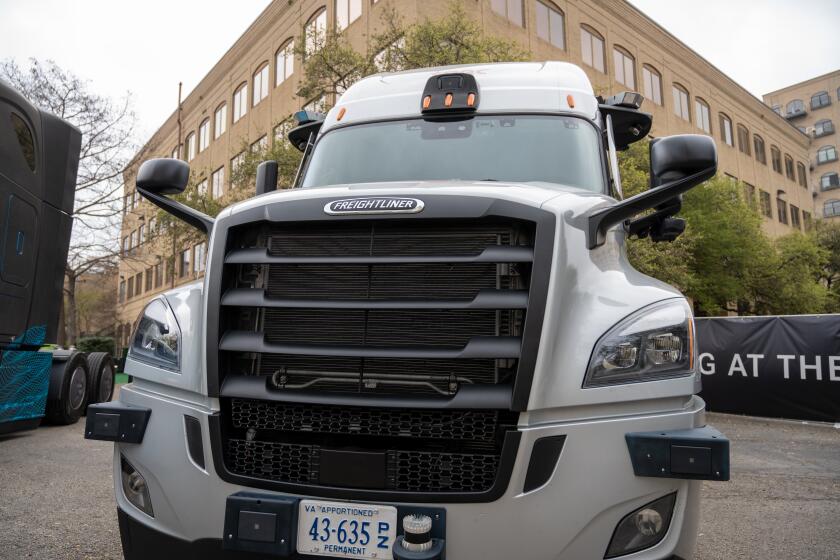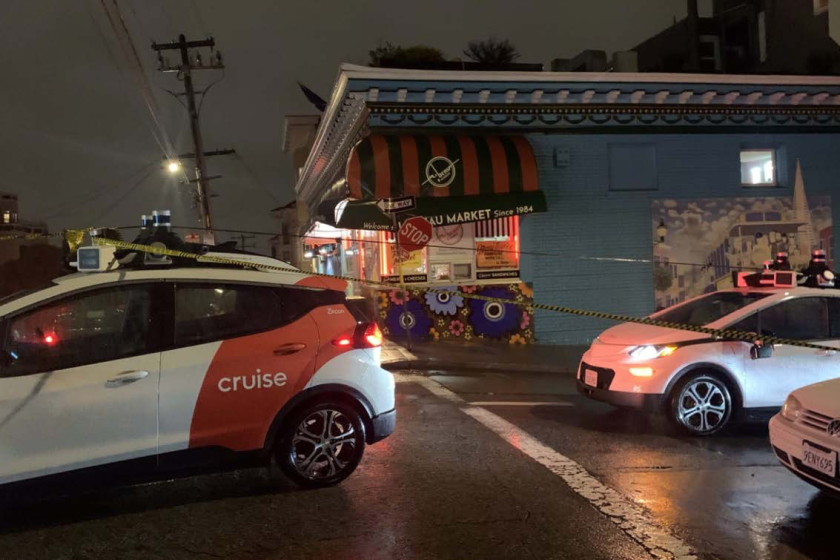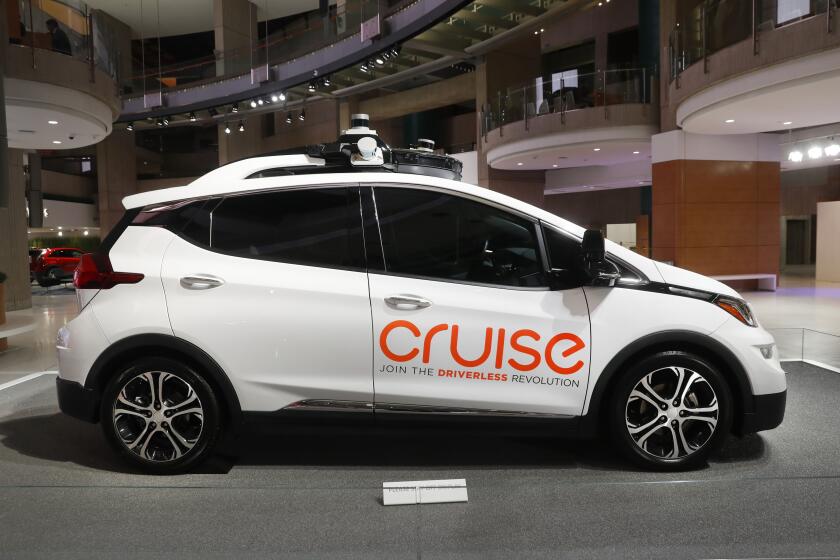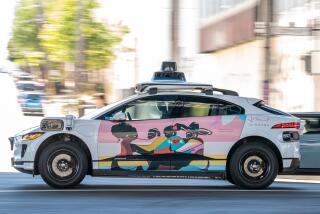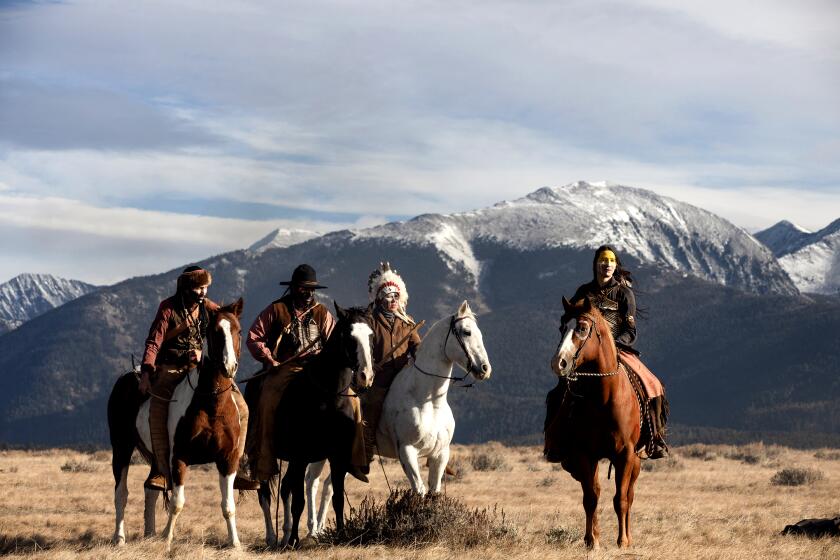Waymo’s driverless taxi launch in Santa Monica is met with excitement and tension
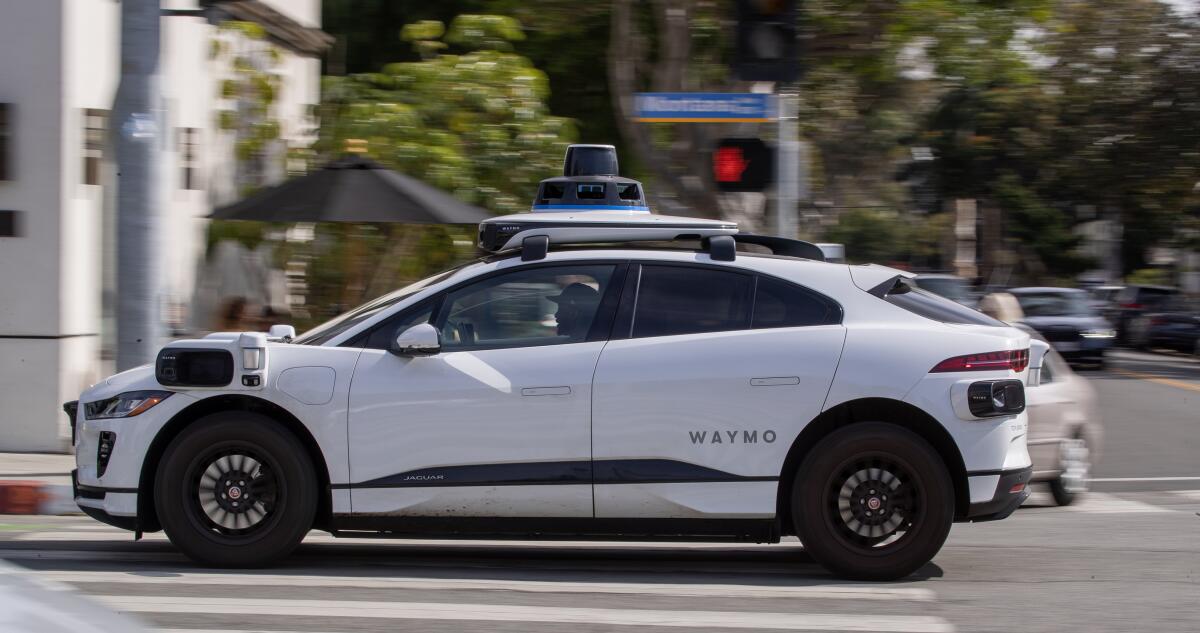
- Share via
Waymo‘s self-driving cars are taking a tour around Los Angeles.
Its first stop? Santa Monica’s Third Street Promenade.
After months of testing, the Silicon Valley-based driverless car company began offering Waymo One — its 24/7 robotaxi service — to the public Wednesday. Those interested can get an activation code that will allow them to ride free for one week at an in-person pop-up event or by signing up online.
In November, Waymo One will move on to Century City, then West Hollywood, Mid-City, Koreatown and downtown L.A.
Autonomous vehicle enthusiasts, many of whom received emails about the event ahead of time, lined up at the Waymo stand in Santa Monica on Wednesday morning before it opened at 8 a.m., said Waymo product marketing manager Julianne McGoldrick.
Waymo, Google’s robotaxi spinoff, has come to Los Angeles. What happens when autonomous vehicles invade the traffic capital of the country?
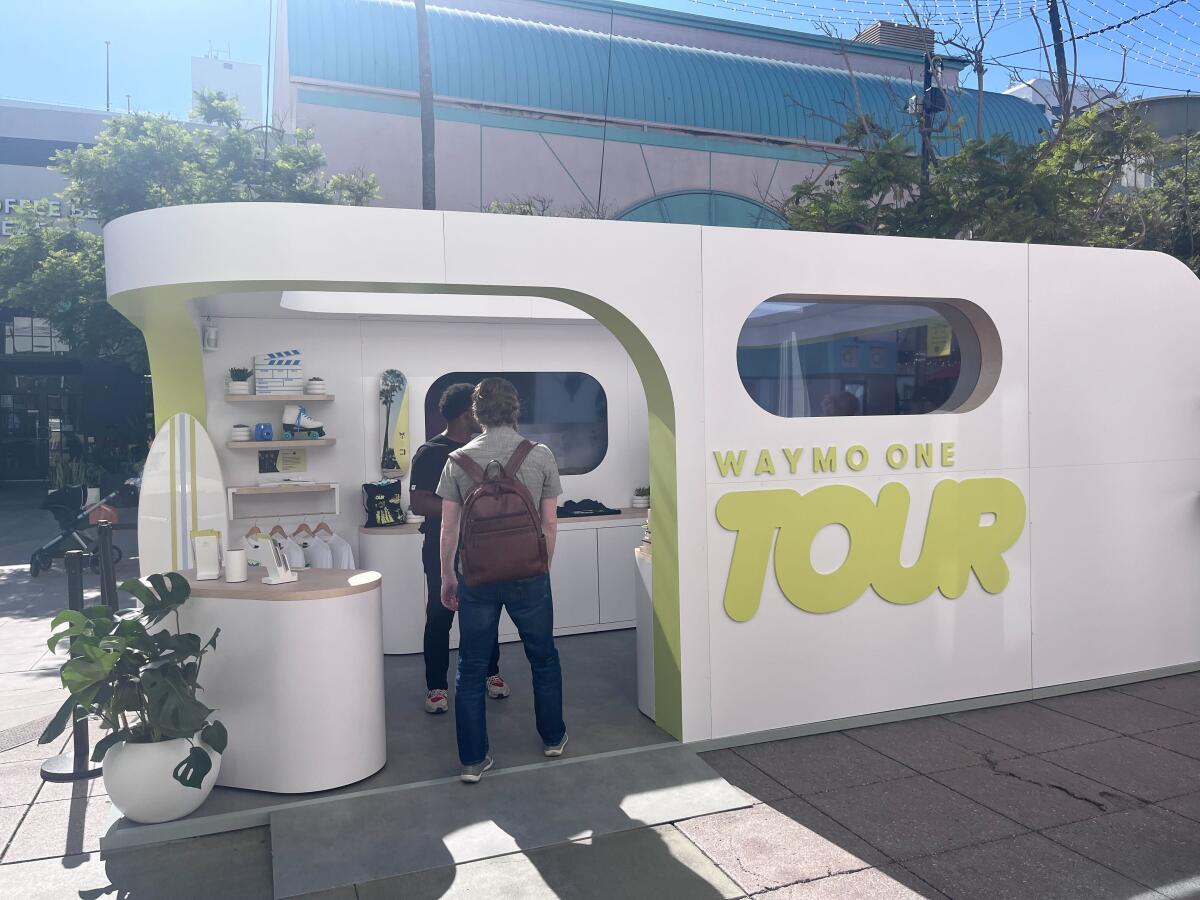
They collected their “ticket to ride” with an activation code and snagged T-shirts and tote bags. Some even wrote on Waymo-branded postcards to mail to friends and family.
Though some were apprehensive, most had seen Waymo cars around Santa Monica already and were excited to finally go on a ride.
“It’s the future,” many repeated.
Waymo, owned by Google parent company Alphabet, began mapping Los Angeles with human drivers in 2019. It began testing self-driving vehicles with safety drivers in Santa Monica last fall, and a Times reporter rode in one in early 2023.
Waymo already offers fully driverless rides to the public in San Francisco and Phoenix. Both Waymo and Cruise, a competitor owned by General Motors, recently received approval from the California Public Utilities Commission to charge for rides in San Francisco and offer 24/7 service.
California Senate passed a bill Monday requiring humans behind the wheel of autonomous trucks for at least five years while safety data are collected. Gov. Gavin Newsom is expected to veto the measure.
Emily Watts, an animator who lives in Santa Monica, dreams of the day she can put her two daughters in a Waymo and send them off to soccer and swim practice.
They’re a little young — 6 and 7 — but “in the future, it’ll be awesome,” Watts said.
Watts, 42, said she’s not nervous to ride in one after doing a little testing of her own over the last few months. She’s driven past several Waymo vehicles and has tried swerving into their lane “just a little bit” or stepping into the street with her dog when she sees one coming.
“I’ll try to trick them,” Watts said, laughing. “They’ve been very good.”
Leigh Holmes of Venice brought his parents, who were visiting from New Zealand.
His father, Tony, began losing his vision at age 35 and is now fully blind at 82.
“I want one of these things for myself,” the elder Holmes said.
After disturbing week for Cruise robotaxis, California applies the brakes on company’s ambitious expansion plans.
Mid-morning, a group of about 30 protesters from Teamsters Union Local 630 arrived, waving signs that read “Waymo = no go” and “Driverless is dangerous.”
The union represents truck drivers and workers from various industries including clerical, warehouse and food service. The Teamsters union has been a strong supporter of Assembly Bill 316, which would have required the presence of a human driver for self-driving vehicles that weigh more than 10,000 pounds. Gov. Gavin Newsom vetoed the bill in September.
“We urge all local elected leaders in L.A. County to hold companies like Waymo accountable by ensuring that this technology is thoroughly tested and regulated before more damage is done to our communities, as we have seen in other regions of the country,” Chris Griswold, president of Teamsters Joint Council 42, said in a statement Wednesday.
Critics of self-driving vehicles have been fueled in recent months by several accidents in San Francisco. Protesters passed out fliers noting incidents in which cars have caused major traffic jams, reportedly blocked an ambulance and killed a dog. Another incident involved Cruise cars that ran over a pedestrian who had been struck by a human driver.
An analysis of Waymo collisions found that a majority of them were caused by other vehicles colliding into the driverless vehicles. Waymo vehicles also sometimes struggle to steer clear of irregularly shaped inanimate objects. Waymo has said that its driverless cars have reduced injuries and fatalities on the road and that its collision numbers may be higher because it reports even minor accidents, whereas human drivers may not always report similar incidents.
Just one day after state officials approved massive robotaxi expansion in San Francisco, a long line of the driverless cars come to a standstill and clog traffic in North Beach neighborhood.
Despite the commotion, several people continued passing through the pop-up, seemingly undeterred by the megaphones behind them.
Juan Matute, deputy director of the UCLA Institute of Transportation Studies, said he believes self-driving vehicles are safer than human drivers after experiencing it himself. He’s a safe streets advocate in his spare time and has taken three rides with Waymo already.
Vehicle automation can “help with some of the issues we have with distracted driving because an autonomous vehicle is never distracted,” Matute said.
More to Read
Inside the business of entertainment
The Wide Shot brings you news, analysis and insights on everything from streaming wars to production — and what it all means for the future.
You may occasionally receive promotional content from the Los Angeles Times.

